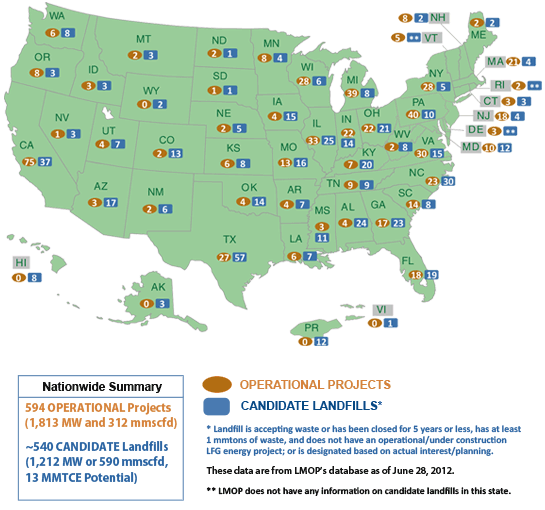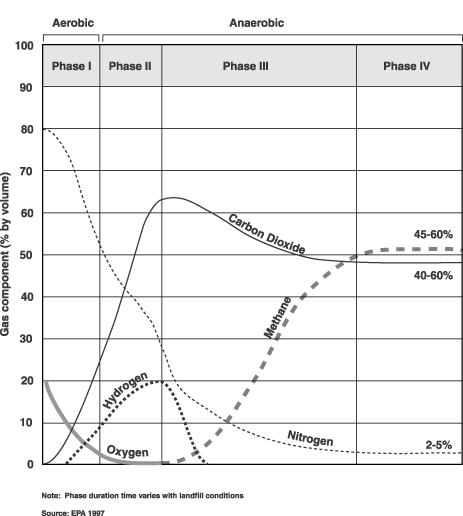

Creative use of landfill gas (LFG) includes heating greenhouses, producing electricity and heat in cogeneration applications, firing brick kilns, supplying high–Btu pipeline-quality gas, fueling garbage trucks, and providing fuel to chemical and automobile manufacturing. Projects range from small–scale community–driven initiatives to multi–million–dollar private investments.
Hundreds of LFG energy projects currently operate in the United States. Projects involve public and private organizations, small and large landfills, and various types of technology. Read about successful LFG energy projects that are enjoying the environmental and economic benefits of using LFG.
Approximately 250 million tons of MSW were generated in the United States in 2008, with 54 percent of that deposited in landfills. One million tons of MSW produces roughly 432,000 cubic feet per day (cfd) of LFG and continues to produce LFG for as many as 20 to 30 years after being landfilled. For more information on LFG modeling to estimate methane generation and recovery potential, see Chapter 2. Federal and/or state regulations require most large landfills to collect LFG and combust it, either by flaring or by using it in an LFG energy system. With a heating value of about 500 British thermal units (Btu) per standard cubic foot, LFG is a good source of useful energy. Many
landfills collect and use LFG voluntarily to take advantage of this renewable energy resource while also reducing greenhouse gas emissions.



